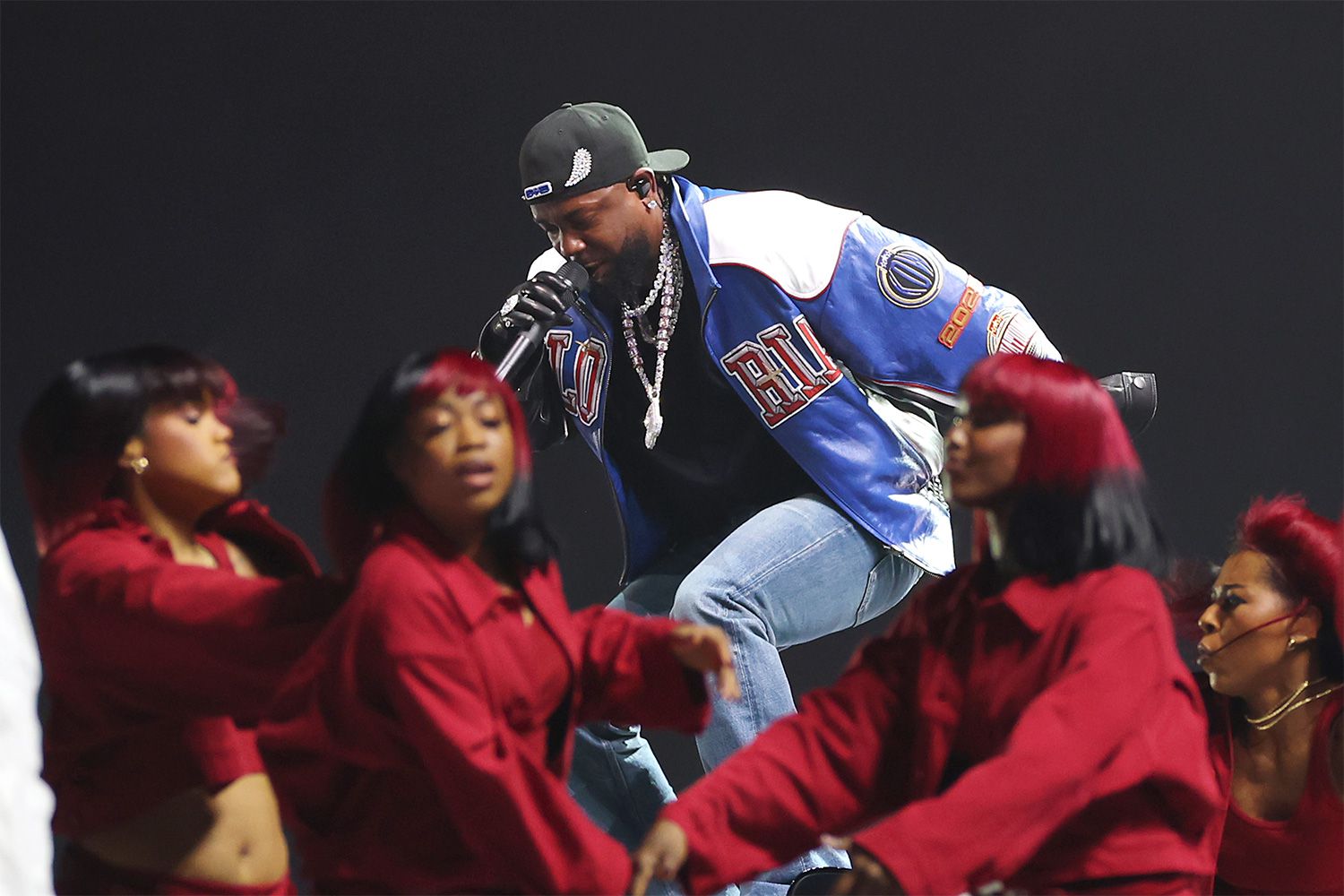Kendrick Lamar shocks fans with an unexpected performance at the Super Bowl, leaving them in awe
Super Bowl LIX became a stage for unexpected moments, blending high-octane football with cultural surprises. While fans around the globe tuned in to watch the Kansas City Chiefs and Philadelphia Eagles compete at the Caesars Superdome in New Orleans, one moment during the halftime show left a lasting impression. The legendary rapper Kendrick Lamar took the stage, performing a surprise rendition of his diss track, “Not Like Us.” This bold move sparked a wave of reactions and media buzz, creating a cultural flashpoint that’s still being discussed.
A Bold Decision in a High-Stakes Moment
In the weeks leading up to Super Bowl LIX, fans speculated about whether Lamar would incorporate “Not Like Us” into his brief halftime set. The track has been the center of a public dispute and legal challenges, with many questioning whether Lamar would take such a risk during one of the most watched televised events. Despite concerns, Lamar went ahead, delivering the track live and taking the audience by surprise.
One particular line from the song, “Say, Drake, I hear you like ’em young / You better not ever go to cell block one,” immediately created a stir, echoing throughout the stadium and social media platforms. The reaction was swift—fans on Twitter expressed disbelief, with one writing, “HE SAID THE F**KING VERSE??? OH DRAKE IS ON THE FLOORRRRR,” while others hailed Lamar for his fearless approach to controversial material.
The Track’s Legal Background
The performance’s shock value was amplified by the legal backdrop surrounding “Not Like Us.” The track had recently become the center of a lawsuit after Drake filed against Universal Music Group. Drake accuses the label of facilitating the release of Lamar’s song, claiming defamation and harassment. The track’s most contentious line refers to Drake as a “certified p**dophile,” which has been strongly denied by the rapper. The legal battles over the song added extra tension to Lamar’s decision to perform it on such a public platform, with industry insiders and fans wondering whether Lamar would include the song or bypass the sensitive material.
Lamar’s decision to perform “Not Like Us” despite the lawsuits amplified his reputation as an artist unafraid to confront controversy head-on. Many fans saw it as a statement of defiance, signaling that Lamar was willing to face any backlash to make a bold artistic statement.
Social Media Goes Wild
As Lamar took the stage, viewers around the world reacted instantly. Fans flooded social media with comments, some praising Lamar for his bravado, while others criticized the choice to perform such a provocative track during such a high-profile event. One tweet read, “Kendrick Lamar is cooking Drake in front of the world at the Super Bowl right now,” while another added, “The way he looked at the camera before that ‘hey Drake’ is priceless.” While many enjoyed the drama, some argued that it was inappropriate to bring such a loaded song to such a widely-viewed event.
Despite the mixed reactions, most fans celebrated Lamar’s choice as a powerful display of artistic freedom. Speculation also grew that Lamar’s performance could be the precursor to a surprise appearance by Drake—an unlikely but exciting notion, given their ongoing rivalry.
Halftime Show Protocol
Halftime performances at the Super Bowl are highly regulated and come with strict guidelines. Performers are given a limited window to deliver their set, usually condensed into a 13-minute medley of songs. They also have to navigate censorship, as explicit language and certain gestures are restricted to keep the event family-friendly. This adds another layer of difficulty for artists who are known for their provocative content.
Lamar’s decision to include “Not Like Us,” despite these limitations, proves that even within a controlled environment, artists can still push boundaries. The performance showcased his ability to balance creative expression with the constraints of a massive live event.
The Drake-Lamar Rivalry
The ongoing tension between Kendrick Lamar and Drake only added fuel to the fire. Their rivalry, marked by diss tracks and public feuds, has been a significant part of both artists’ careers. With “Not Like Us” specifically referencing Drake, Lamar made the Super Bowl halftime show the latest battleground in their public feud. This move further solidified Lamar’s position as a boundary-pushing artist, willing to take risks even in front of millions of viewers.
The ongoing legal disputes, particularly the lawsuit from Drake against Universal Music Group, made the track’s inclusion all the more charged. By referencing Drake in his Super Bowl performance, Lamar made an unmistakable statement about his stance in their ongoing rivalry, leaving viewers to pick sides.
Implications for Live Performances
Lamar’s performance has broader implications for the future of live performances at major events. As the Super Bowl halftime show continues to evolve into a cultural event that merges music, sports, and politics, artists are increasingly using the platform to address important issues. Lamar’s bold choice signals that artists are ready to challenge expectations and push limits—even when the stakes are high.
In the wake of his performance, questions about the role of censorship, artistic freedom, and the responsibilities of broadcasters have been raised. The performance has reignited discussions about how major live events are curated and whether there is space for provocative, boundary-pushing performances in the future.
Conclusion
Kendrick Lamar’s surprise performance of “Not Like Us” at Super Bowl LIX has made a lasting impact on the cultural narrative of the event. His decision to perform a track deeply embedded in legal and personal controversy has sparked widespread discussion about artistic freedom, public responsibility, and the future of live performances. Whether it’s viewed as an act of defiance or an unnecessary provocation, Lamar’s performance has created a defining moment in Super Bowl history—one that will likely be referenced in the years to come.
